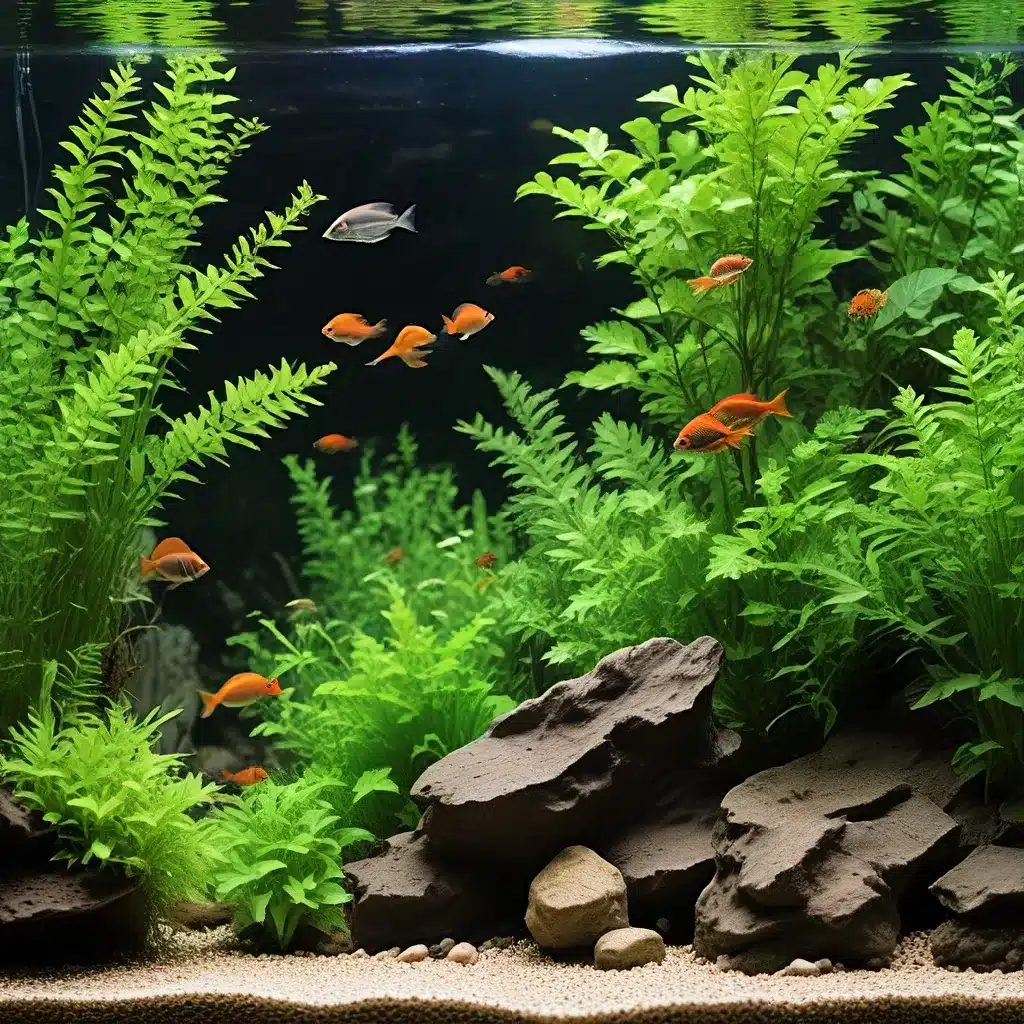
In the captivating world of aquarium keeping, maintaining optimal water conditions is paramount to the health and vitality of your aquatic inhabitants. One of the most critical aspects of water quality management is understanding and controlling the nitrogen cycle, a complex yet essential process that can make or break the success of your aquarium.
Unraveling the Nitrogen Cycle
The nitrogen cycle is a fundamental biological process that occurs in aquarium ecosystems. It involves the conversion of ammonia, a highly toxic substance, into less harmful forms of nitrogen through the action of beneficial bacteria. This cycle is crucial for the well-being of your fish, shrimp, and other aquatic creatures, as it helps to remove the waste products that can quickly accumulate in a closed aquarium environment.
The nitrogen cycle begins with the breakdown of organic matter, such as uneaten food, plant debris, and fish waste, which releases ammonia into the water. This ammonia is then converted by nitrifying bacteria into nitrite, a substance that is also toxic to aquatic life. Finally, another group of bacteria, known as nitrite-oxidizing bacteria, transform the nitrite into nitrate, a less harmful form of nitrogen that can be removed through regular water changes or uptake by aquatic plants.
Understanding the complex interactions within the nitrogen cycle is essential for maintaining a healthy and stable aquarium ecosystem. By mastering the art of nitrogen cycle management, you can ensure that your aquatic residents thrive in a safe and nurturing environment.
Maintaining the Nitrogen Cycle
Keeping the nitrogen cycle in balance requires a diligent and multi-faceted approach. Here are some key strategies to help you maintain optimal water quality in your aquarium:
Regular Water Changes
Performing regular partial water changes is one of the most effective ways to control the buildup of nitrates in your aquarium. Aim to replace approximately 25% of the tank water during each change, using dechlorinated, temperature-matched water. This helps dilute the existing nitrate levels and introduces fresh, clean water into the system.
Conscientious Feeding
Overfeeding can be a common cause of ammonia and nitrite spikes in aquariums. Shrimp, in particular, have relatively small appetites, so be mindful of the amount of food you provide. Remove any uneaten food promptly to prevent decomposition and the subsequent release of ammonia.
Efficient Filtration
A well-functioning filtration system is essential for maintaining water quality and promoting the growth of beneficial bacteria. Regularly inspect and clean the filter media according to the manufacturer’s instructions. A clean and efficient filter helps remove waste and supports the nitrifying bacteria that are crucial for the nitrogen cycle.
Beneficial Bacteria Supplementation
Consider supplementing your aquarium with a beneficial bacteria product to enhance the growth of nitrifying bacteria. These specialized microorganisms play a vital role in converting toxic ammonia into less harmful substances, helping to maintain a healthy nitrogen cycle.
Aquatic Plant Integration
Incorporating live aquatic plants into your aquarium can be a valuable asset in managing the nitrogen cycle. Plants, especially floating and stem varieties, absorb nitrates from the water, effectively reducing their concentration and promoting a more balanced ecosystem.
Maintaining a Balanced Stocking Density
Overstocking your aquarium can lead to an imbalance in the nitrogen cycle, as the increased waste production can overwhelm the system. Research and follow the recommended stocking guidelines for your tank size and the specific species you keep to ensure a harmonious and sustainable environment.
Troubleshooting Common Nitrogen Cycle Issues
Despite your best efforts, you may occasionally encounter challenges in maintaining the nitrogen cycle. Here are some common problems and strategies to address them:
Ammonia Spikes
If you notice a sudden spike in ammonia levels, it could be due to overfeeding, an imbalance in the filtration system, or the introduction of new fish or decaying organic matter. Perform a partial water change, reduce feeding, and ensure your filter is functioning properly.
Nitrite Accumulation
High nitrite levels are often a sign that the nitrogen cycle is not fully established or that the system is experiencing an imbalance. In this case, continue performing partial water changes, introduce beneficial bacteria supplements, and monitor the situation closely.
Persistent Nitrate Issues
If nitrate levels remain stubbornly high even after water changes, consider incorporating more aquatic plants into your setup or exploring alternative filtration methods, such as a denitrifying filter or a planted aquarium.
By staying vigilant, testing your water regularly, and implementing the appropriate maintenance strategies, you can effectively manage the nitrogen cycle and create a thriving, balanced aquarium ecosystem.
Conclusion
Mastering the nitrogen cycle is a cornerstone of successful aquarium keeping. By understanding the complex biological processes at work and implementing a comprehensive water quality management plan, you can provide your aquatic inhabitants with the optimal conditions they need to thrive.
Remember, patience, diligence, and a commitment to regular maintenance are the keys to maintaining a healthy, vibrant aquarium. With the right knowledge and techniques, you can unlock the captivating world of aquarium keeping and enjoy the beauty and serenity of a well-balanced underwater ecosystem.
For more resources and inspiration on aquarium care, be sure to visit King Aquarium, a leading online destination for aquarium enthusiasts. Happy aquarium-keeping!

